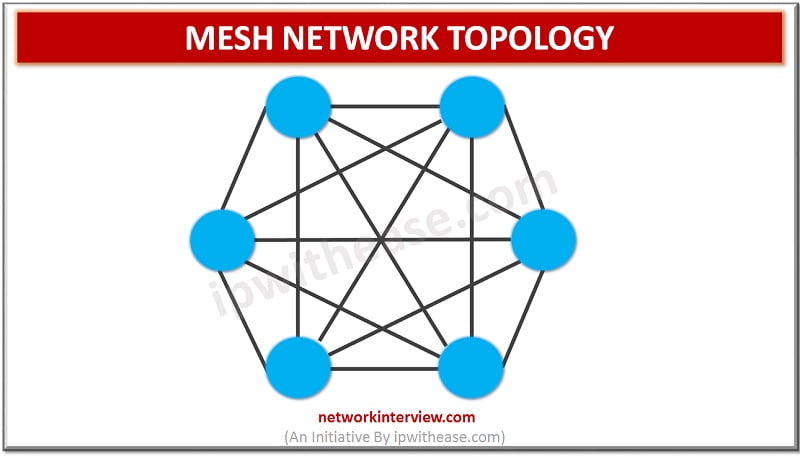
Mesh Network Topology
MESH NETWORK TOPOLOGY
Network Topology refers to the physical or logical layout of a network. Mesh network topology is a type of site-to-site WAN topology in which each network device is connected to every other device through a dedicated link (that carries data for the two connected devices only ). There is no concept of a central hub or computer which acts as a central point of communication.
So, if we have n devices in the network then each device must be connected with (n-1) devices.Further, the number of links in a mesh topology of n devices can be calculated by a simple formula i.e. n(n-1)/2.
Mesh topology is commonly used for wireless networks.
ADVANTAGES
- Mesh topology is reliable as failure of one device does not affect the communication between other devices in the network.
- It can manage high amounts of traffic as there are dedicated point-to-point links for each computer.
- It provides high privacy and security as point-to-point link assures against any unauthorized access.
- The point-to-point connection makes fault detection simpler and less cumbersome.
- It is highly redundant and the time lag is less when comparing with other topologies( like hub and spoke, partial mesh).
DISADVANTAGES
- The cost of implementation is high.
- Building and installation is tedious and time consuming as each device needs to be connected with other devices.
- Sometimes there are scalability issues as a device cannot be connected with large number of other devices with a dedicated point-to-point link.



